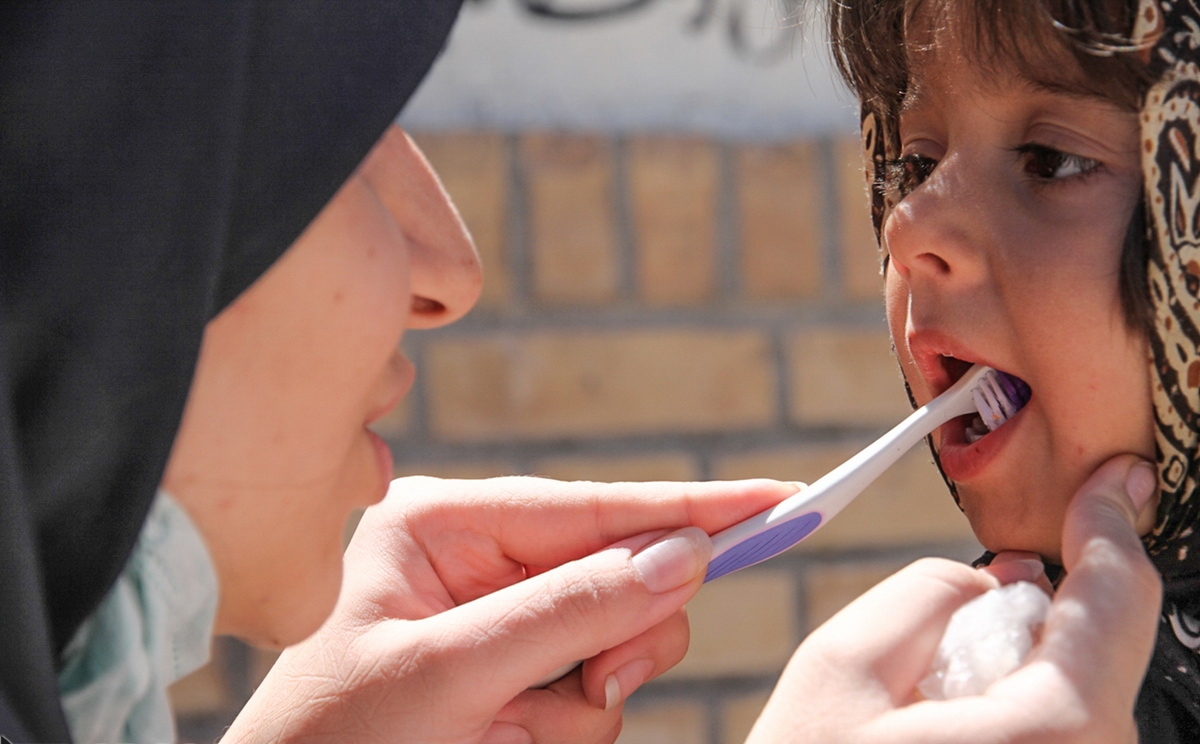Following a study of children’s dental health, the Heath Ministry’s Oral and Dental Department has directed focus toward prevention of tooth decay by initiating a scheme for children under 14 as the first step.
The study revealed that on average, a 12-year-old Iranian has 2.09 decayed, missing or filled teeth, (DMFT), 83% of which are due to bacterial infection. This is to say that each child develops two decayed teeth every six years (or one every three years) from the age of 6 onwards when permanent teeth start to emerge.
Hamid Samadzadeh, head of the Oral and Dental Department, said that the scheme aims at preventing tooth decay through the administration of fluoride compounds and educational programs on dental care for school children. The DMFT index of 2.09 among 12-year-olds is expected to reach zero by 2025.
“Regular use of fluoride compounds can avert the decaying process by 25% to 45%. The scheme is underway in 60,000 schools covering seven million primary school students,” Alef News Agency quoted him as saying.
Also, in cooperation with the Iran Health Insurance Organization, all restoration, fissure sealant and similar services are covered by insurance for children less than 14 years of age.
The official pointed out that the Cooperative, Labor and Welfare Ministry that has authority over insurance funding “offers little cooperation in dental insurance coverage” due to the huge costs.
“Only the Cooperative Ministry has authority and the Health Ministry is powerless in this regard,” he said.
Samadzadeh also pointed to the average number of decayed teeth in adults in the 35-45 age bracket, noting that “Iranian adults have 13.2 tooth decays and four extracted teeth.” Several other studies also suggest that DMFT is 11.0 +/- 6.4 for every Iranian aged 35-44. The findings indicate an impaired oral health status in Iranian adults, particularly those in the low social and educational strata.
“This figure naturally grows as age increases but we would prefer to restore and fill teeth rather than simply pull them out,” he said.
One of the main priorities of the 2014 Health Reform Plan is to promote restoration, scaling and filling instead of extraction of damaged teeth.
“Dental care clinics encourage patients to remove teeth because the service is covered by insurance and restoration is too costly, but policies are designed to change the trend,” said Samadzadeh.
He said that while oral and dental health are the most common problems with 90% of the population suffering from some form of dental problems, a large part of the costs of dental care is paid from people’s pockets.
During the last fiscal year, Iranians paid six trillion rials ($171 million) from their personal earnings for dental care. Health insurance only covers 8% of the expenses.
“We are making efforts to reduce people’s payments year by year and increase the insurance share to 30%,” he was quoted as saying by ISNA.
Vaqareddin Akhavan Zanjani, head of the 16th Annual Conference of Restorative and Cosmetic Dentists (Oct. 25-28), said that the rate of milk tooth decay is also worrying.
“Based on surveys, Iranian children have an average of 5.16 rotten milk teeth at the age of five and six,” he said, adding that children under six must also use fluoride-contained toothpaste but with care, Mehr News Agency reported.
Regular dental checkups can reduce the chances of dental caries, thus reducing the burden of the huge dental costs.
“The sooner dental problems are diagnosed, the more affordable its treatment will be. Once teeth are completely damaged the costs of treatment becomes exorbitant.” He advised visits to dentists at least once a year.


